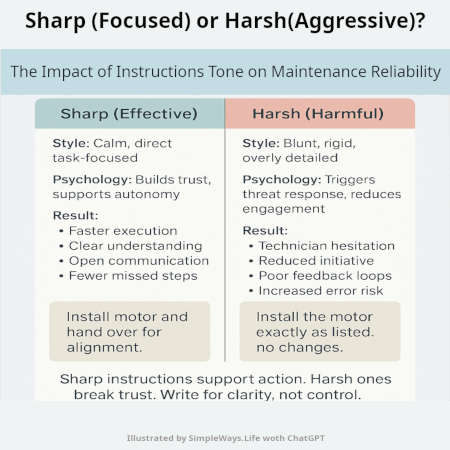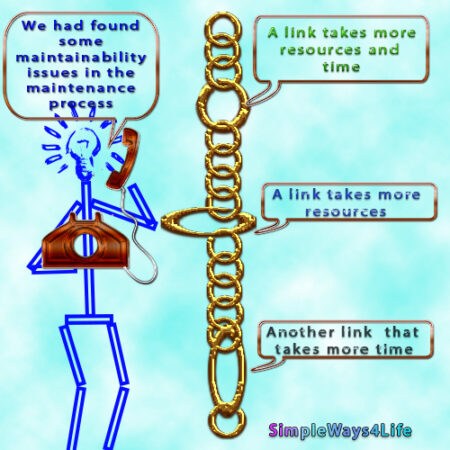To understand how “Updates are as the Spare parts” let’s look to some maintenance fundamentals. Machines break. Systems fail. For decades, maintenance meant replacing spare parts to keep operations running. Bearings, belts, and seals were the lifeblood of reliability. Without them, production stopped.
Today, the story has shifted. Much of our world runs on digital systems. They don’t need oil or bolts, but they demand something just as critical. Updates are the Spare Parts of our digital world. They arrive silently, often unnoticed, yet they hold the same responsibility: keeping systems alive, efficient, and safe.

CUSTOMPRICE-TO2JAN26
Think about it. A missing bearing can bring down a motor. A missing update can expose a server, crash an app, or stall a business. These failures create downtime, and they demand preparation. More importantly, they remind us that reliability is never a one-time achievement. Instead, it becomes a continuous cycle of renewal.
This article explores how updates now play the role of spare parts. We’ll look at maintenance strategies, the way teams handle updates, and even how everyday users experience them. From the invisible fixes to the updates that break things, the lesson is clear: reliability in the digital age depends on mastering updates, just as it once depended on spare parts.

CUSTOMPRICE-TO2JAN26
From Spare Parts to Software Updates
Spare parts once defined maintenance. A motor stopped, you replaced a bearing. A pump leaked, you swapped a seal. Reliability depended on the right part, at the right time, in the right place. Stocking, planning, and installing spares was the daily rhythm of maintenance.
Now, the same principle lives in digital operations. The only difference? The parts are not physical. They arrive as patches, bug fixes, and security updates. Updates are the Spare Parts that keep digital systems from wearing out. Without them, applications slow down, security gaps widen, and performance falters.
The shift from bolts to code may seem dramatic, but the philosophy remains. In both worlds, downtime is costly. In both, prevention is smarter than repair. And in both, reliability comes from preparation, discipline, and a system that ensures parts — whether steel or software — arrive before failure.

CUSTOMPRICE-TO2JAN26

CUSTOMPRICE-TO2JAN26
Updates as Spare Parts
When a bearing is replaced, the machine regains life. In the digital world, an update serves the same role. It restores, improves, and prevents failure. That is why updates are the Spare Parts of our connected systems.
Unlike bolts or seals, these spares arrive as code. They slip quietly into servers, phones, and laptops. Sometimes they are invisible, like a hidden patch that secures the system. At other times, they feel like a transformation, refreshing the interface or unlocking new features.
The similarity with spare parts runs deeper. Just as physical components must be stocked, tracked, and installed, updates also require planning and timing. A neglected update is no different from a missing spare part — sooner or later, it triggers failure. Therefore, updates must be treated with the same seriousness as maintenance spares.
Seen this way, updates are not optional add-ons. They are critical resources, silently keeping our digital assets running, much like spare parts do for machines.

CUSTOMPRICE-TO2JAN26
Spare Parts Strategies in the Digital Age
Maintenance teams have long relied on different strategies to manage spare parts efficiently. Some parts are replaced only when they fail, a method known as run-to-failure. Others are replaced on a fixed schedule, following preventive maintenance principles. More advanced teams use predictive methods, monitoring conditions to anticipate failures. Each strategy balances risk, cost, and reliability.
In the digital world, these strategies have clear parallels. Waiting for a software crash before applying a patch mirrors run-to-failure. Scheduled updates follow the preventive approach, keeping systems current and secure. Predictive updates rely on monitoring logs, telemetry, and user feedback to deploy fixes before problems arise.
Critical spares in maintenance correspond to backups and rollback versions in software. They allow teams to recover quickly if an update causes unexpected issues. Standardization also matters: just as teams reduce spare variety to simplify inventory, IT teams benefit from consistent platforms and update policies.
Ready to transform your mindset? Click and Get your copy > Now For Sale on Simpleways.life & Amazon
By viewing updates through the lens of spare parts strategies, we can see that digital reliability requires the same careful planning, prioritization, and discipline as traditional maintenance. Transitioning from physical to digital doesn’t reduce the complexity—it simply changes the tools.
How Updates Affect Teams and Everyday Life
In businesses, updates are a critical part of operations. IT and maintenance teams plan, test, and deploy them carefully to prevent downtime. Just as spare parts keep machinery running, updates are the Spare Parts that keep systems functional. Delaying or skipping updates can trigger failures, slow performance, or create security gaps. Teams rely on processes, monitoring, and rollback plans to maintain reliability, mirroring the discipline of traditional maintenance.
Meanwhile, updates touch the daily lives of millions of users. On phones, laptops, or apps, some updates go unnoticed, quietly improving performance. Others feel like transformations, giving new features or a refreshed interface. Occasionally, updates cause frustration or disruption — like the infamous Facebook rollout that broke core functionality. These moments highlight that, whether in business or personal use, updates carry risk, just like physical spare parts.
Ultimately, updates connect the professional and personal worlds. They ensure that systems remain resilient, secure, and usable. Understanding their importance, and approaching them with the same care as spare parts in maintenance, is essential. In this way, digital reliability becomes a shared responsibility between teams and users alike.
Why It Matters for Reliability
Reliability is the ultimate goal of both maintenance and digital operations. When spare parts fail or updates are skipped, downtime occurs, costs rise, and trust erodes. Updates are the Spare Parts that prevent these failures, ensuring systems remain functional, secure, and efficient.
Neglecting updates can have cascading effects. In a factory, a broken bearing halts production. In software, an unpatched system can crash, expose sensitive data, or slow business processes. Both situations highlight the importance of planning, monitoring, and timely intervention.
Moreover, consistency is key. Just as maintenance teams follow schedules and checklists, digital teams must deploy updates systematically. Predictive monitoring, backups, and standardization reduce risk, enabling swift recovery if problems arise. Updates are not optional tasks—they are critical lifelines.

CUSTOMPRICE-TO2JAN26
Finally,
embracing updates builds resilience. Teams and users who understand their value can respond faster, prevent failures, and maintain confidence in systems. Reliability is no longer a static achievement. Instead, it is a continuous cycle of preparation, action, and renewal, where updates serve as the essential components keeping both machines and digital systems alive.

CUSTOMPRICE-TO2JAN26
Looking ahead,
the landscape of maintenance continues to evolve. Digital systems demand new strategies, tools, and perspectives. The lessons learned from physical spare parts — planning, monitoring, and preparation — apply just as much to software updates.
In the coming weeks, I will share my personal journey of exploring this digital maintenance landscape. I’ve been working on a project that applies these lessons in practice, experimenting with updates, reliability strategies, and real-world workflows. Soon, I will reveal the results and insights, showing how these principles translate into action.
For now, understanding updates as spare parts is the first step toward building resilient systems. The next article will dive deeper into this journey, exploring the behind-the-scenes strategies and preparations that make digital maintenance truly reliable.
If you feel you need help with any of these ideas we discussed, request a Management Consultancy or Coaching Services From our Store












